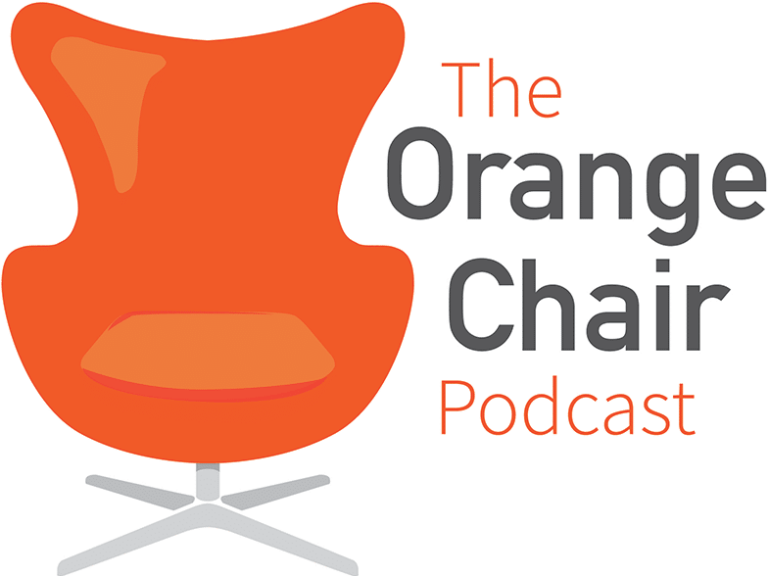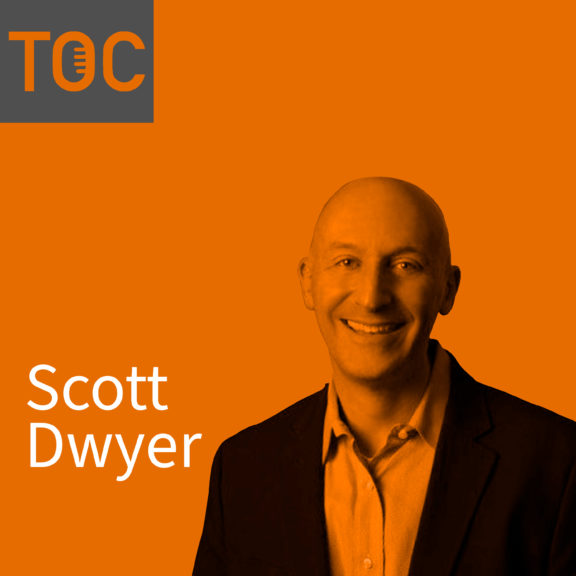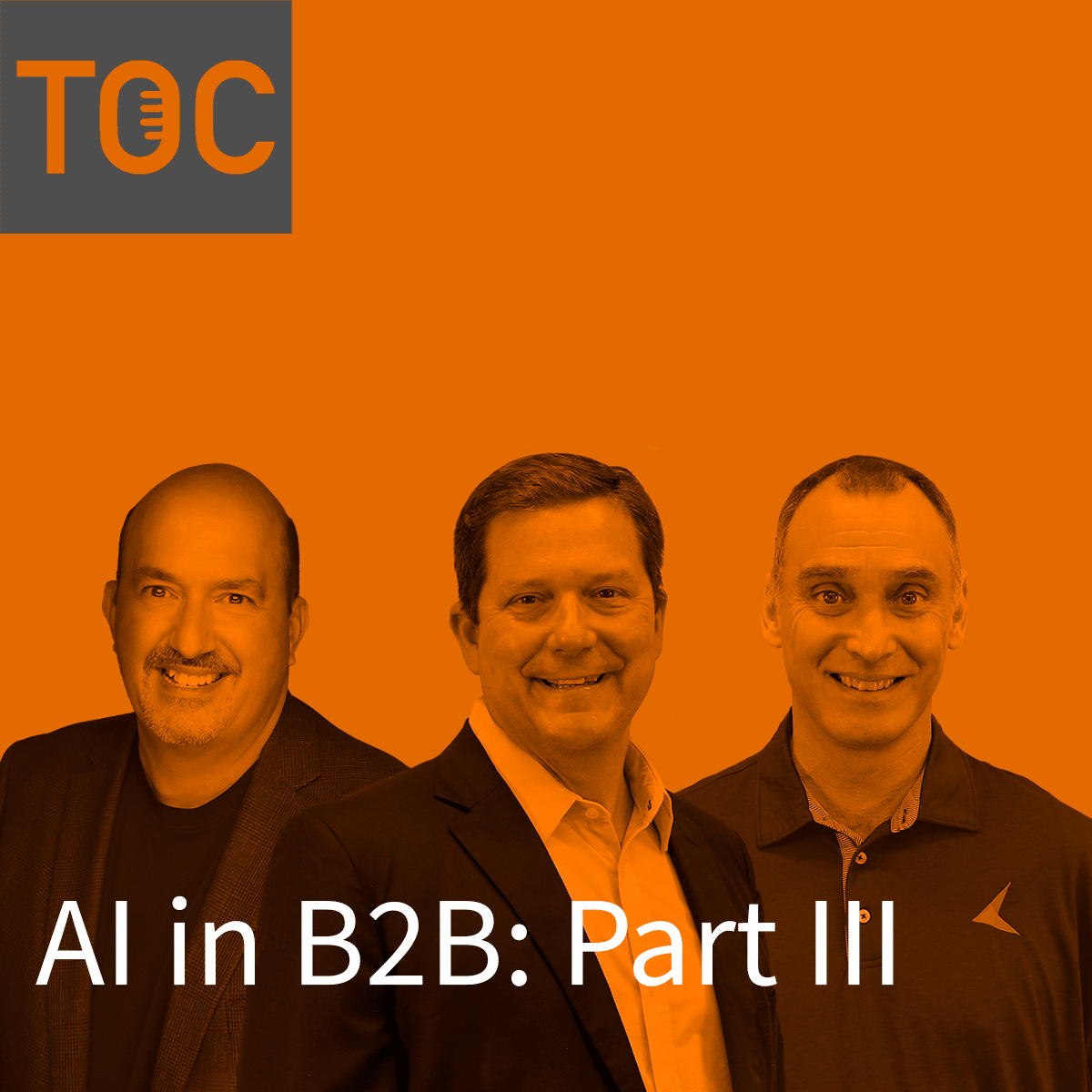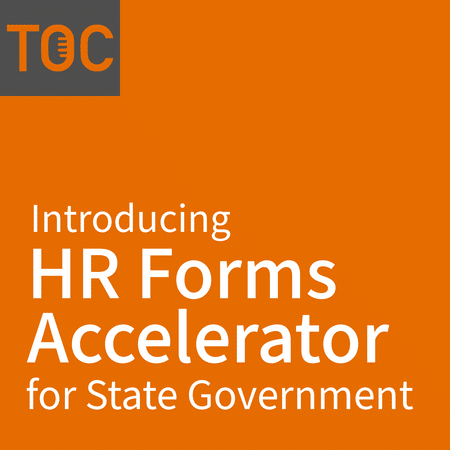This website uses cookies so that we can provide you with the best user experience possible. Cookie information is stored in your browser and performs functions such as recognising you when you return to our website and helping our team to understand which sections of the website you find most interesting and useful.
Listen now on your favorite streaming service!
presented by KeyMark


Summary
The following is a transcription from The Orange Chair Podcast, “What’s New with Hyland Software.”
In this episode, we sit down with Scott Dwyer, Vice President of Product and Strategic Planning from Hyland.
We discuss the future of Hyland and new technology developments that are happening right now. Topics include cloud based services and Hyland experience.
To listen to the full episode, or any other episode, you may do so by selecting your preferred podcast listening method on The Orange Chair Podcast page.
Transcription
Alex Frazier (19s): Hey everybody. Welcome to the Orange Chair Podcast. On today’s episode, we have Scott Dwyer in from Hyland Software. He’s going to be talking about the future of Hyland and all of the latest trends that he’s seeing right now. Scott, thank you so much for being on this episode.
Scott Dwyer (1m 1s): Thanks Alex. Great to talk to you. As you indicated, I work for Hyland Software.
I am Hyland’s Vice President of Product and Strategic Planning. At Hyland, what that means is that me and my team are responsible for product management, corporate business planning, pricing, along with a couple other functions.
The way I like to describe what we do is, we really are the canary in the coal mine for Hyland Software. We research what’s happening in the marketplace.
We identify new product and solution ideas. I prioritize those ideas for Hyland, so that they’re the most impactful. Then we get those executed throughout our research and development teams.
Hyland’s SaaS Future
Alex Frazier (1m 45s): Well, I do have a few questions for you in terms of the future of Hyland. So, just to start, where do you see Hyland heading with their software-as-a-service model?
Scott Dwyer (1m 58s): Cloud-first is a central part of our product vision. We launched a new product vision a couple of years ago, and that product vision really guides our strategic direction on the product side and cloud-first SaaS based model is the core of that product vision.
We are continuing to execute against that vision every day with every enhancement pack that we release. Our team has released more REST-based APIs, which allow access to services that are typically provided by historical monolithic applications.
We’ve released new Hyland user interface components, or UI.
You’ll hear about new applications coming out later this year that will be SaaS based. That software-as-a-service, SaaS based model, is core to our future vision for our product portfolio.
Hyland Capture and its Cloud-First Future
Alex Frazier (3m 1s): So where’s Hyland heading with capture technology and how does that fit in with that SaaS based model that you were talking about?
Scott Dwyer (3m 7s): Yeah, it’s a great question. So I’ll give you a specific answer. First, Hyland Experience Capture, or what we’re calling “HXC,” is really the next generation of our modern capture capabilities.
Hyland Experience Capture is cloud-based, it’s going to be released on what we’re calling our Hyland Experience Platform or “HXP.”
That’s a lot of acronyms! “HXC” is our capture application. “HXP” is our SaaS platform.
Later this year, we’re going to be releasing HXC, which brings together the best of multiple capture product capabilities from across our Hyland portfolio, which include OnBase and one content, perceptive content, and Brainware.
We will be releasing an MVP of Hyland Experience Capture at CommunityLIVE this fall (2020).
That is intended to be a standalone scanning classification and header level indexing app with no requirements from other Hyland products. So that’s really exciting.
Somebody does not necessarily have to buy another Hyland product, whether it be OnBase or anything else, they can actually purchase HXC as a standalone. It’s cloud based and lightweight. That release is causing a lot of excitement.
We’ll actually be targeting structured documents and forms, which can be classified and extracted using the automated learning engine, which is a really strong capability from our Brainware product.
Hyland Experience Capture as a Standalone Offering
Alex Frazier (4m 55s): Wow. That sounds really exciting. So, what you’re saying is the capture technology, the HXC would be able to be a standalone product, so you wouldn’t have to have anything else Hyland-related? You could just have the capture piece?
Scott Dwyer (5m 11s): Yeah, that’s correct. The HXC software will provide a high performance indexing solution, which allows customers scan and index a high volume of pages with very little setup.
It’s the execution of our cloud-first vision. I think it differentiates itself from other solutions because there really is no software to install in order to do QA: to split, merge and verify indexes. We’re really excited about it.
Hyland User Interface Upgrades
Alex Frazier (5m 45s): Yeah, that is very exciting. This kind of makes me think of some other technologies that you and I had talked about in a previous discussion.
Are there any new technology developments besides that on horizon that are exciting to you? I know in our previous discussion you had mentioned a user interface configuration and a new generation of unity forms.
Scott Dwyer (6m 8s): Yes, that’s absolutely true. As we continue to move toward a cloud-first environment, we are releasing more user interface components underneath the umbrella of our Hyland UI.
We released a number of those internally that are building out our future applications of products.
If any of your customers have taken any of our recent EPs, our OnBase foundation enhancement packs, whether it be pack one, two or three, they would have seen those new UI components in play.
We are coming out with a new client strategy, and I’m not going to say a lot about that now, because I think we’ll have a lot more information to share later this year, but that’s something that’s really exciting.
Hyland Forms
Scott Dwyer: Hyland is also planning on releasing, in 2020, what we’re calling “Hyland Forms.”
We’re taking the best of our unity forms capabilities and image forms capabilities, and we’re allowing access to our entire customer base for this new forms technology.
For example, we have had customers who are on, perhaps some of our other platform products, like perceptive content. They can’t access the best of our forms capabilities within OnBase. We’re now going to be releasing that technology in what we’re calling “Hyland forms.”
So folks across our entire customer base will be able to access what really is a hallmark strength of the OnBase product, which is our forms capability.
We’re also going a little further beyond 2020 into 2021.
Workview and Workflow Upgrades
Scott Dwyer: We’re going to be releasing new versions of our workview and workflow products, which are as incredibly powerful process technology and case management technology products. This is as part of this as part of our new technology strategy. We’re really excited about that too.
Hyland Forms as a Standalone Product
Alex Frazier (8m 19s): I just had one more question about the forms.
So how are the Hyland forms going to be different from what’s already in place right now?
Scott Dwyer (8m 30s): So there are a couple of ways. I think the most important way is that it’s not going to be just limited to those customers who purchase OnBase.
We’re also updating the technology to be able to allow for a more flexible, lightweight form capability.
We anticipate that this will be a big part of what will be our low code application strategy moving forward as well.
Low Code Solution Development
Alex Frazier (9m 1s): So just to move forward a little bit when you think about rapid application development, where do you see Hyland fitting into that and what are the benefits to the customers?
Scott Dwyer (9m 14s): Hyland’s philosophy for more than 25 years has been to allow customers to build solutions with very little reliance on custom code. That has certainly been something that set us apart from our competitors.
Rapid application development or what we’re really beginning to call it internally “low code solution development,” continues on the philosophy of very little reliance on custom code. However, it now has the support of a more modern architecture behind it. This is a really significant and essential part of our strategy.
Moving forward, low-code solution development provides a number of benefits to both partners and customers. The fact that they will be able to build their own apps and they can also easily deploy those apps to users.
Part of that concept is an app store. So we’ll be developing an app store where partners like KeyMark can build their own apps and share it with other partners and with a broader set of users within the Hyland ecosystem.
Hyland App Builder
We also have a couple other aspects of that low code solution development strategy, which includes something we’re calling the “Hyland App Builder.” That is the tool that lets you configure those UI components I talked about earlier together to let you build apps. This can be done by folks who don’t have to be software engineers.
This is all back to the strategy around configurability and the need to not be a software developer in order to be able to leverage the best of our best of our software.
Customers Succeeding with New Version Releases
Alex Frazier (11m 20s): Wow, man, that all sounds really cool. I’m excited to see the way that one is utilized within the customer base, and how that just pushes everything forward as well. To shift gears a little bit, I do want to talk about some of the latest trends. Where do you see customers succeeding with Hyland technology now?
Scott Dwyer (11m 43s): Well, we’ve got over 15,000 active customers who benefit from our current software, our offerings, our products, our solutions, our applications today and the current version of our software we just released for OnBase.
We just released a OnBase EP3 back in mid April, and it is the most stable, secure version of our software. It has the greatest set of enhancements and capabilities that we’ve ever produced.
There’s a lot of benefit for folks being able to take the current versions of our software. We, as you know, we serve a number of different industries, very capably. They are government, insurance, financial services, higher education, commercial and healthcare.
Salesforce Integration
We continue to offer new products and solutions. A couple that I thought maybe I’d highlight here today that have come out just in the last three EPs have been our integration with Salesforce. That’s a really popular one amongst our customer and partner base.
Our OnBase video treats video like a first class citizen.
Governance Rules as a Service
Something else that has been a big request from our users over the course of the last number of years is a service that we call “Governance Rules as a Service.” This is the ability to manage a records retention.
We partner with Iron Mountain in their policy center, and they have a cadre of attorneys who do the research as to what the local and state and federal requirements are for document retention so you have the most up to date insight into the document retention requirements.
AP Invoice Approver App
Another one is an “AP Invoice Approver App.” That’s our first ever persona based app. Those persona-based apps are going to be a big part of our future strategy going forward. Our first one was released with OnBase EP2 back in December.
There has been a lot of really rich functionality and capability in those EP releases.
More Workflow and Workview Solutions to Come
We also continue to release solutions built on top of our workflow and workview capabilities today. Things like employee file management and contracts management and a number of other solutions.
I could probably go on and on. I won’t do that, but really a lot of exciting things with our current set of software.
Alex Frazier (14m 37s): Yeah all of that sounds really exciting. There are lots of ways you can use these apps across the board, amongst many different industries. I can also see how that’s all going to play a big part when some of these new things that you’ve mentioned are coming out as well. So that’s all really exciting.
Scott, thank you so much for sharing with us today. Do you have any final thoughts before our time comes to a close? Anything that maybe we mentioned or you’d like to elaborate on, or maybe anything I didn’t ask?
The Current Content Services Trend
Scott Dwyer (15m 11s): Well, I think one of the things you mentioned early on, Alex, is some of the trends that we’re seeing in the industry. And I think those play into some of my final thoughts. I think we’re seeing a lot of competition from what we would call non-traditional content services providers. That’s really the industry that we as Hyland put ourselves in, to a certain extent. We’re seeing competition from ubiquitous companies like Salesforce, Workday and Service Now.
Content Services Shifting to Cloud
Scott Dwyer: We’re seeing the greater market shift to cloud models; to subscription pricing models. I think it’s important for your listeners to understand that we are making those same shifts, not because we’re seeing our competition do it, but because we believe that it is the direction that best suits a Hyland software and its ecosystem. This provides customers value in the most flexible way. I’m really excited. I know we at Hyland are really excited for the time that we’re in. I know it’s difficult for a lot of people, certainly with the pandemic. We believe that in that type of adversity, that there’s opportunity.
We see a greater opportunity because of the shifts that our marketplace is undergoing with the shift to cloud and the shift to subscription.
The Shift to More Flexible Architecture
There is also a shift to flexible architecture with more frequent releases of our enhancement packs instead of releasing once a year. Now we’re releasing three or four times a year, getting the value out into the marketplace, doing it more and more in a SaaS model. Doing it in a more lightweight manner as we continue to execute against that product vision. We’re really excited for our partners and for our customers to be able to take advantage of that modern technology.
The ability to deploy a lightweight solution in the cloud, like Hyland Experience Capture. The ability to build on what is out there already. What we believe to be a low-code application, low-code solution building platform, will only continue to get more and more robust. That is the type of flexibility and capability and continued additional release of new offerings that we’re really excited about.
Even in the midst of this difficult time, we see an opportunity to support our partners, to support our customers and provide value so that they can continue to serve their customers.
Conclusion
Alex Frazier (18m 25s): Scott, thank you so much for your time today. Thank you so much for the information. I’m very excited to see what happens in the future with Hyland. I can’t wait to see all of these items that you’ve mentioned come to light and to see how our customers are going to be able to experience those things and help their businesses. So thank you, Scott.
Scott Dwyer (18m 46s): Right? Thanks Alex. It’s been a pleasure. Appreciate it.
Alex Frazier (24m 38s): Well, that’s all that we have for you guys today. Thank you so much for listening to this podcast. The Orange Chair Podcast is brought to you by KeyMark.
If you liked this podcast, please leave us a rating like and subscribe to our podcast channel, wherever you guys are listening to podcasts, and you can even follow us on Instagram and Facebook. And we would love to hear from you.
This podcast is produced by Greg Aiken, Clay Tuten and me, your host, Alex Frazier. Until next time, bye guys.







